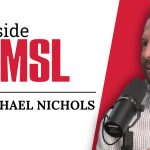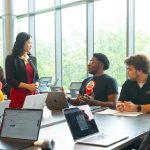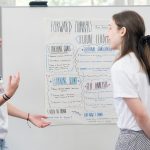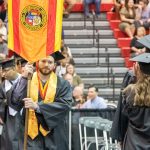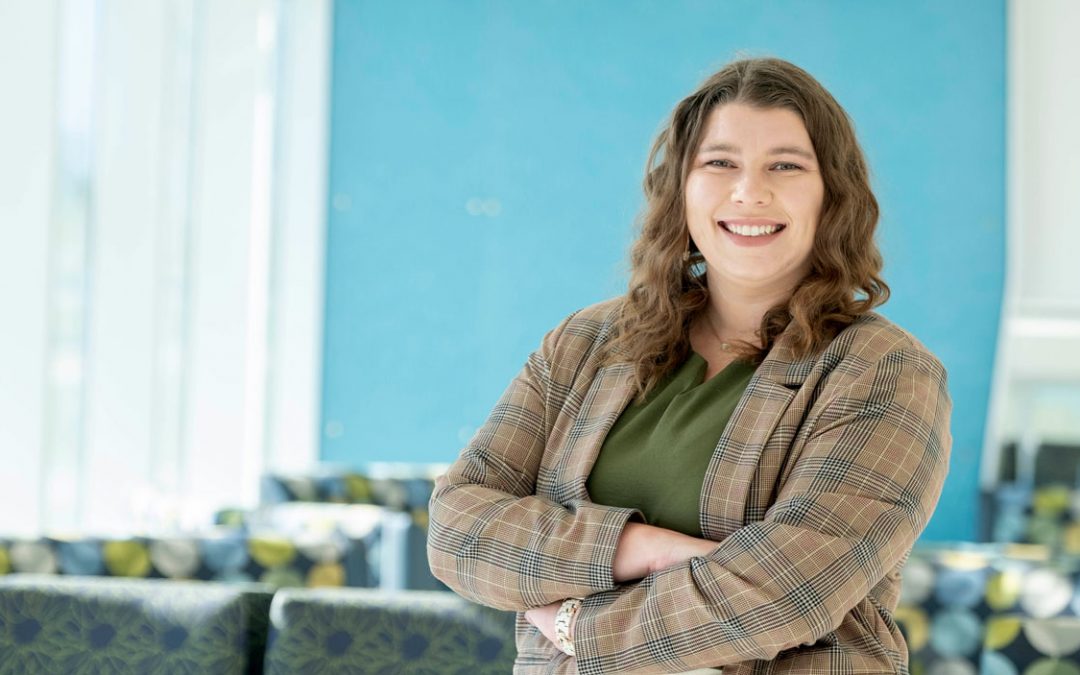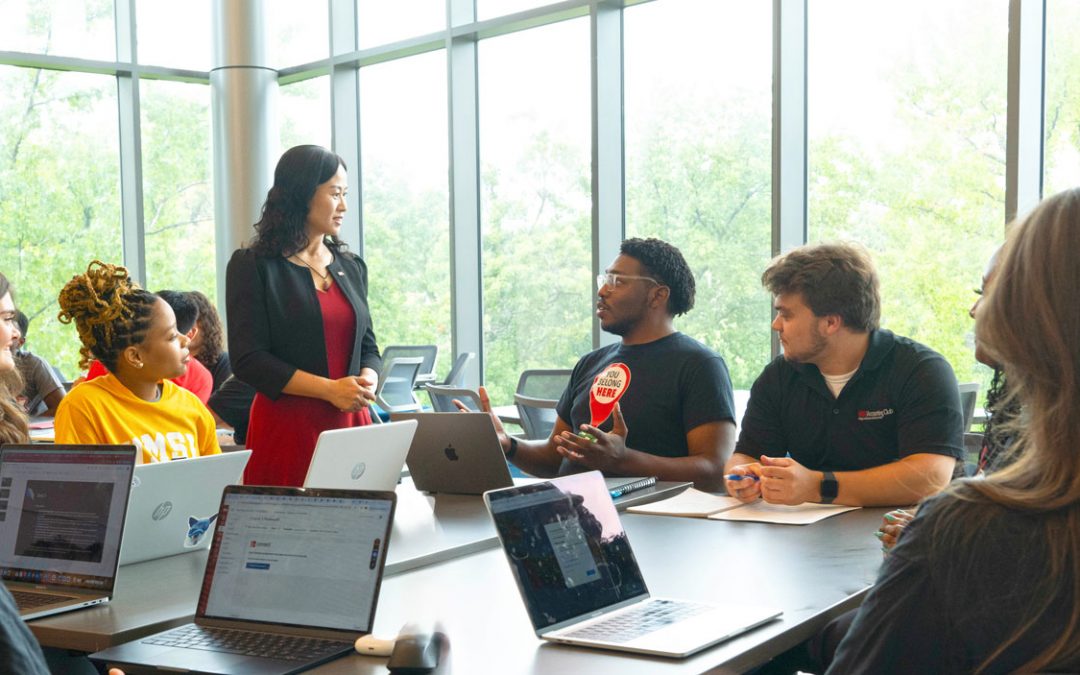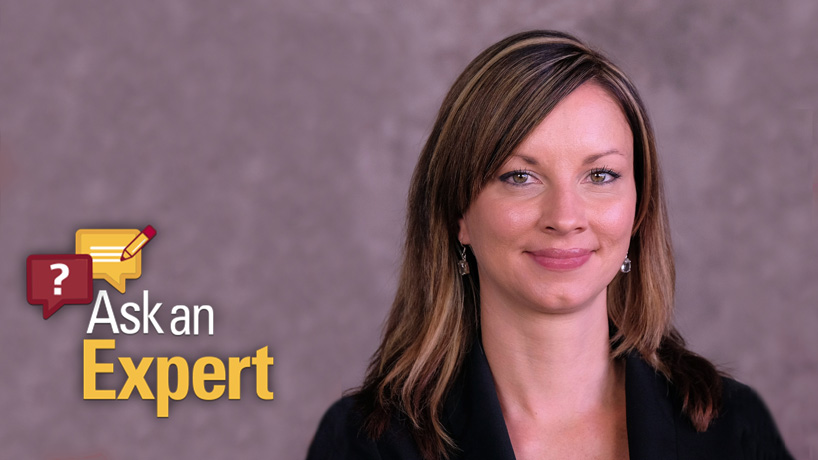
Anita Manion, an assistant professor of political science, will be sharing her insight and analysis with KSDK (Channel 5) on Election Night. She serves as the station’s political analyst. (Photo by August Jennewein)
An estimated 62 million people have already voted in the 2020 election over the past month, but that means perhaps 100 million or more ballots are still to be cast over the next eight days.
The race between Republican President Donald Trump and Democratic challenger and former Vice President Joe Biden has dominated news coverage over the past month and will get the most attention as the votes are finally tallied on Nov. 3. But there is intrigue in other races being waged in Missouri.
In the last installment of the Ask an Expert series, UMSL Daily spoke to Anita Manion, an assistant professor in the Department of Political Science at the University of Missouri–St. Louis and KSDK (Channel 5) political analyst, about some of the most notable races.
In what ways do you think this presidential election has been different from a typical one?
The first thing that is making everything different is the pandemic. Of course, President Trump has returned to some larger-style rallies. But, on the whole, it means we’re not seeing traditional campaigning. The pandemic was the reason the second presidential debate was canceled. It’s shifted the way that we’re voting. So that’s why we’re seeing so much vote-by-mail, early and absentee voting. I think it’s hard to find a way that that hasn’t touched local races, federal races, everything.
Then, of course, we do have a situation where President Trump is an unconventional candidate. He was in 2016. He is now, so that always brings a different dynamic to things. A basic example this week would be the 60 Minutes interview, which is a standard thing that presidential candidates do. Right? It didn’t go to the standard way.
How much do you think COVID is a factor in the race beyond the way that it’s affecting the way the race is run and the way voting is going to happen? Has it pushed traditional issues aside?
I do think so. But the thing with COVID is it overlaps everything. It’s a health care issue. It’s an economic issue. It’s a social safety net issue. It’s an issue about schools. It’s US foreign policy issue. Should we be part of the World Health Organization? What’s our relationship with China? It is this giant, global, national and local issue that touches so many things.
Despite how different and chaotic the world has seemed, the polling has been incredibly stable for months and months with Joe Biden holding a lead of at least seven points in national averages. How unusual is that?
This is one of the unusual markers of President Trump’s presidency. We typically see a spike where presidents have high popularity when they come into office. Even folks who didn’t vote for them might be supportive. Then things start to happen, and that goes downhill. We see peaks and valleys in their approval rating throughout their presidency. President Trump has been remarkably stable in terms of his approval polling numbers. Things can go really well – the economy can be great or maybe we have a foreign policy victory – and you don’t see a major spike. Things can go really horribly, like a global pandemic and some mishandling of aspects of it, and you don’t see a major valley. So, people are really entrenched in their feelings around this president. That is unusual.
How much trust should people put in polling now when there’s the perception that the polls got it wrong four years ago? How has polling changed or improved?
There are challenges with polling, particularly since people moved away from landlines. It isn’t a perfect science. But in terms of our criticisms of it post-2016, we need to take a little accountability as folks who were interpreting the polls. When we see statistics that say someone has an 80 percent chance of winning, that doesn’t mean they automatically win. If you tell them me there’s 20 poisoned Skittles in the bowl, I’m not going to eat a Skittle, right? I think that we saw those numbers, and we said, “This person is a shoo-in.” Now we’re looking at it differently.
The national polling was actually pretty accurate. If you looked at the national polling and the national popular vote, it was within the margin of error.
That’s not how we elect presidents though. What matters is state-level polling, particularly in the battleground states. I think that the polling in battleground states has improved since 2016.
Another issue that we had with polling in 2016, is pollsters making sure that their populations are a representative sample and controlling for certain variables like age, race, gender, political party affiliation, these things. They were not controlling for education level because that historically had not been a strong indicator of how someone was going to vote. But, in 2016, we saw that break. If you had a college degree or higher, it was a very strong indicator you were voting for Hillary Clinton. If you had less than a college degree, it was a very strong indicator you were voting for Donald Trump. That was a lesson learned coming out of that election, and pollsters are controlling for that now.
One of the challenges with polling is predicting turnout, but it’s expected this election will see historic turnout. What do you make of the early voting numbers we have seen so far?
This was another challenge and an area where pollsters’ models were a little off in 2016 because there was a surge in turnout among white rural voters and depressed turnout among urban voters. While we can all answer poll questions accurately about who our preferred candidate is, ultimately, what matters is who shows up. This year, of course, we have the layers of how people are voting, when they’re voting, concerns about problems with mailing ballots that might not be counted. So there are all kinds of layers of complexity.
For me, this is one of the positive aspects of some of the political challenges we’ve been through the last several years. One of my silver linings is there is a renewed interest in politics. In 2014, there was really low voter turnout in the midterm election, and particularly from young people – like 20 percent of 18- to 29-year-old voters. Then, in 2018, we saw this big surge in voter turnout, and younger voters were the group that had the biggest increase percentage.
We are anticipating historic voter turnout this year. We’re seeing that already in early voting, but it is hard to gauge. Those could be a lot of people who aren’t willing to go on the polls on Nov. 3. It’s hard to predict, but we know voter registrations are up a lot. They’re up in Missouri, they’re up in Jefferson County, up across the country. There has been a lot of effort at universities and through political and nonpartisan organizations to get out the vote.
The race in Missouri’s second Congressional district is one of maybe a dozen races nationally that seems to be getting extra attention. Why is it drawing the interest of political scientists and pundits?
Ann Wagner has had a stronghold on that district for some time and had won by double digits. I think she was beating her opponents by 20-30 percent since she has held this seat, but we saw a shift in 2018 where we had a Democratic challenger close the gap to just 4 percent, a major shift in the second district. This year, Ann Wagner has a much more formidable opponent in Missouri State Senator Jill Schupp. The polling that we’re seeing is very close. It’s a super competitive race. The Cook Political Report has it listed as a toss-up. I think it is an indicator of a trend that we’ve seen nationwide since 2016, and that is a shift in the vote of suburban women. Not just shifting their politics to be more democratic or more liberal but also being generally more engaged in politics as well.
The Missouri’s governor’s race is unusual in that the incumbent, Mike Parson, is seeking election for the first time, and he’s running against Nicole Galloway, the only Democrat currently holding statewide office. How competitive is that race?
That race is interesting to me for a number of reasons. Missouri, though we’ve become a redder state in recent years, has had many Democratic governors. Governor Parson assumed his position after Eric Greitens resigned, so this is his first actual election as governor, though he is the incumbent in the position. We have seen those polls tighten in the governor’s race. That’s a trend that we have seen following the presidential polling. President Trump won Missouri by about 18 points in 2016. The most recent polling I’ve seen in Missouri only has him up by maybe seven or eight points. That huge gap has narrowed. We’ve also seen the race with Nicole Galloway and Mike Parson become more competitive. Nicole Galloway was one of the first governors that Joe Biden endorsed. That shows a national interest in this race that is a competitive race or else they wouldn’t be weighing in on it.
Missourians will be voting on Amendment 3, which would undo a lot of things that voters passed in 2018 with the Clean Missouri Initiative. How unusual is it to see an amendment like this in response to something that was recently approved?
It’s not unheard of, but it’s not typical. In 2018, 62 percent of Missouri voters voted for the Clean Missouri Initiative amendment, and the Missouri State Legislature did not like that amendment. So they put this amendment together to overturn what was passed by a really solid majority of Missourians in 2018. The language that they originally used was amended by a judge because it didn’t clearly identify the fact that this was overturning what the voters had selected in 2018. The proposal does enact some minimal changes to lobbying, which, on its face, you would see that and say, ‘Of course, let’s ban lobbying gifts.’ But it’s a $5 change on one side, and then it goes from $2,500 to $2,400 on the other side. The bigger issues are a change from the nonpartisan demographer that was passed by Clean Missouri back to this bipartisan commission and then another change that goes outside what Clean Missouri would did to change the way people are counted in Missouri for redistricting. This is for drawing Missouri State House and Senate districts, not for U.S. Congressional districts. Missouri and other states use census data to draw their districts, but what Amendment 3 proposes is that just voting eligible Missourians would be counted. With that approach, there are no people under 18 being counted, no people who are not citizens being counted, no people who are on parole and probation being counted. That could shift representation in Missouri towards an older, whiter, more rural population and strip legislative power from areas like St. Charles and O’Fallon and other suburban and urban areas that are more racially diverse or have lots more kids that wouldn’t be counted.
In the city of St. Louis, Proposition D would change the way people vote in primary races. What do you think about the debate over it?
St. Louis city is a democratic stronghold. I believe about 85 percent of voters vote Democrat in the city. So the real race is the primary in those elections. Primary voter turnout is very low – we’re talking like 20 percent of voters. Of those, you have the vote split. So in the last mayoral primary, you had Lyda Krewson winning with about 30 percent of that 20 percent of voters. Because she won the primary, she was a shoo-in for the general election. In really low turnout elections, with these narrow margins, some people are concerned that the true voice of St. Louis voters isn’t being heard, and there’s a minority of people deciding who the elected officials are. A lot of people in St. Louis feel like the real decision should be made in the general election. What Prop D would do is make the general election between the top two primary finishers regardless of party. This would apply to races for mayor, comptroller, Board of Aldermen and the aldermanic president. Folks could vote for more than one candidate in the primary, and then they would take the top two vote getters, regardless of whether they’re a third party candidate, a Republican or a Democrat.
Of course, there are criticisms of this proposition, too. You know, a lot of people say, this is a system that very few cities have, that there’s lots of room for trouble with this system and that instead of changing the system, we should educate and motivate voters to come out and vote in those primary elections.
All eligible students, faculty and staff members are encouraged to vote. For more information about voting or voting resources, visit https://www.umsl.edu/collaborations/citizenship-in-action/vote.html.



